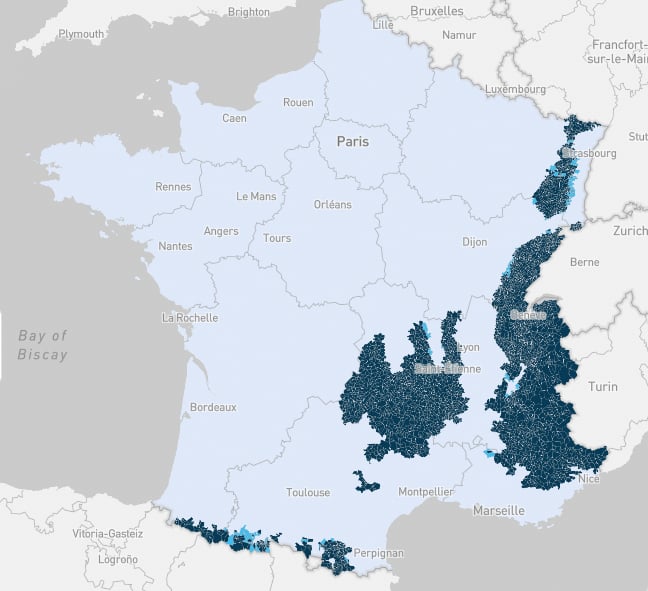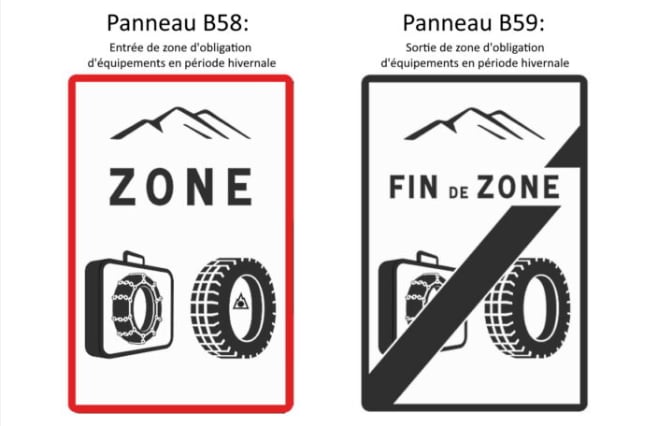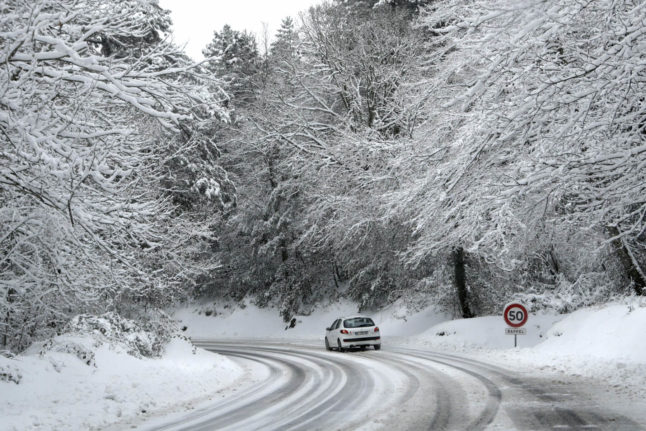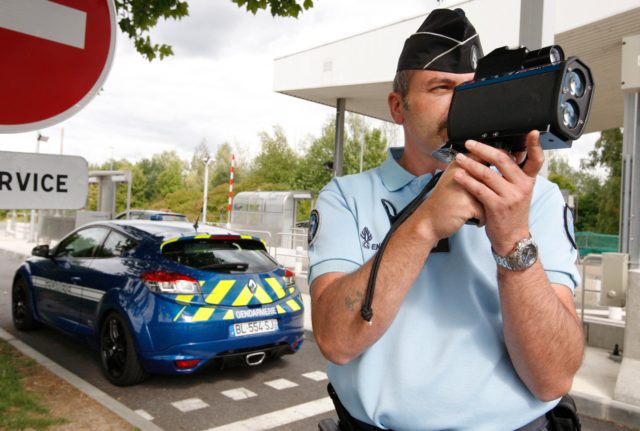France is – slowly – introducing a new law that makes winter tyres, all-weather tyres or snow chains compulsory for drivers in certain areas.
The Loi Montage II (mountain law II) has been a bit of a long, drawn-out saga – it was originally set to be introduced in 2020, was then delayed to 2022 and then a couple of ‘education’ years were added before enforcement began.
When
The law covers the period from November 1st to March 31st, and police will begin enforcement action from November 1st. However, this year drivers who are caught without the correct tyres will not be fined, merely informed about the new law. Fines of €135 will be issued from next year.
What
During the relevant period, in order to drive in the areas covered by the law you car must have either all-weather tyres (all of the vehicles tyres must be all-weather) or one of the following;
- Winter tyres (pneus contact/pneus neige) – if you are using snow tyres or all weather tyres, these must be fitted to all four of your vehicles’ wheels when you enter an area covered by the mountain law. By the decree, these tyres should be designated as ‘3PMSF’ (3 peak Mountain Snow Flake). These tyres might be marked ‘M+S’, ‘M.S’ or ‘M&S’. The 2023-2024 winter season will be the final one where ‘M+S’ tyres are allowed.
- Studded tyres (pneus cloutés/pneus à crampons) – These are tyres adapted to drive on icy roads. As a general rule, you may use studded tyres from November until the end of March. Regional governments may adapt this date to local weather conditions, but they are not compulsory. Vehicles fitted with studded tyres are not required to have any extra equipment.
- Chains (chaînes) – if you use chains instead of winter tyres you only need these on two wheels of your car. They are allowed on all roads covered in snow, whatever the season.
- Chaussettes à neige – ‘snow socks’ – these are similar to chains, and again are only required for two wheels on the car.
Where
This is where it gets complicated, the law applies in only 34 of France’s 96 mainland départements – generally those areas which are mountainous.
With those 34 départements, local authorities pick which roads the new rules apply to.
The below map shows the dark blue zones where the snow tyre law applies – as you would expect they’re concentrated around the Alps, Pyrenees, Jura, Vosges and the Massif Central.
You can click here to get the interactive version of the map which allows you to zoom in and look at your area in more detail.

You will also see signs as you enter or leave a snow tyre zone – the sign on the left informs you that you are entering a zone where all-weather tyres, snow tyres or chains are compulsory, the sign on the right informs you that you are leaving this zone.

Many other European countries also have rules on snow tyres so if you are driving to a European neighbour during winter time, you should check what the rules are in that respective country. The European Consumer Centre France has a handy map outlining the different rules in Europe.
French vocab
Tomber en panne – break down
Route barré – road closed
Déviation – diversion
Antigel – antifreeze
Route glacée – icy roads
Antipatinage – Traction control
Liquide de lave-glace spécialement adapté aux conditions hivernales – Windshield washer fluid adapted for winter conditions



 Please whitelist us to continue reading.
Please whitelist us to continue reading.
Does this apply if exclusively on an autoroute, for example the A89 between Clermont-Ferrand and Lyon appears to go in an out of the winter tyre zone several times? But snow chains on a motorway???